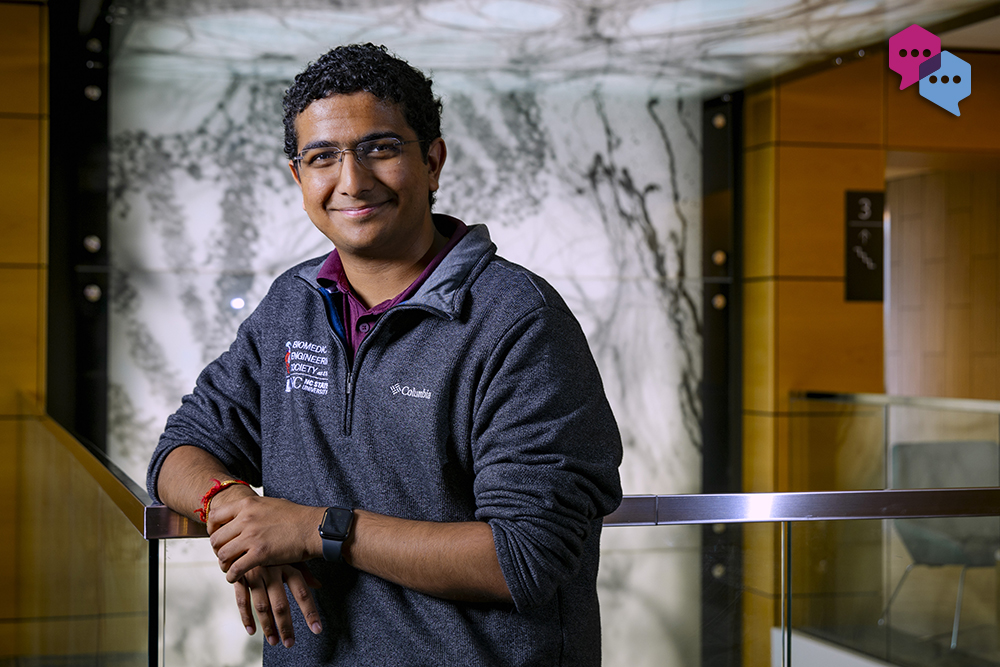Karthik Ramakrishnan is a senior majoring in biomedical engineering and minoring in neuroscience within the UNC College of Arts and Sciences and UNC School of Medicine. Using tools and frameworks from the field of physics, he studies phenomena within the nervous and cardiovascular systems to determine how to prevent disease development.
Q: How did you discover your specific field of study?
A: In hindsight, this is a pretty funny and strange story. Shortly after we began quarantining for COVID-19, I came down with a terrible cold. While blowing my nose, an incredibly thick stream of mucus came out — probably the worst I’d ever seen. Naturally, I googled: “Why is my mucus so thick?” And, as often happens, I went down a rabbit hole, exploring concepts like viscosity — fluid thickness — and flow.
By the end of the day, I’d learned the first five minutes of an introductory fluid mechanics class! More importantly, I got better, and I realized I really enjoyed learning about biology from a physics-based perspective, a field known as biophysics. I knew then that this is what I wanted to do for the rest of my life.
Q: Academics are problem-solvers. Describe a research challenge you’ve faced and how you overcame it.
A: One project I am currently working on is understanding how fluid factors like shear — the force that is present when you slide two objects together — and viscosity influence cancer cell metastasis, when cancer cells spread throughout the body from an initial site via the bloodstream. In our lab, we use chips that allow us to replicate and study certain aspects of human physiology without needing live test subjects to observe these processes and test predictions. The device I was using aimed to replicate a blood vessel to provide a platform to observe cancer cells leaving the vessel in different-viscosity media.
But we couldn’t get the endothelial cells to grow within the device, much less form a layer. These cells would die almost immediately upon insertion, rendering the devices and prior prep work useless. I aimed to systematically eliminate the issue by first discussing with my PI and postdoc mentor and then tweaking my protocols between experiments rather than making large changes at once. By improving cell culturing techniques, adjusting the collagen pH to prevent acidity from killing the cells, and washing the device with a specific type of saline before seeding, we eventually succeeded in consistently growing an endothelial cell layer within devices.
Q: Describe your research in five words.
A: Harnessing physics to elucidate biology.
Q: Who or what inspires you? Why?
A: My high school physics teacher, Mr. Taeho Lim, was and continues to be my biggest inspiration. He was a really good teacher, obviously, but he was also one of the first teachers I had that made science cool. His passion was infectious, and it really inspired me to not only go down the research path but also communicate research with zeal.
Q: If you could pursue any other career, what would it be and why?
A: An aerospace engineer. I loved planes and rockets growing up and combining that with physics and tapping into the side of me that loves designing things would be interesting and boundary-pushing — literally. I would miss the biological side of my current research, though.


